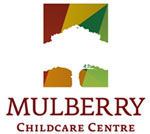Going to Pre-School – Tips for Parents
Change is the only constant in life and learning to manage change successfully begins in early childhood. By the time you are reading this blog post your child has already made many changes or transitions, from cot to bed, from liquid to solid food, from crawling to walking. She may already have transitioned from home to day care or be on the cusp of becoming a proud pre-schooler. Each of these changes and transitions can cause uncertainty, moments when your child moves from the security of the home routine and the people she knows to the unknown ways of a new environment and many new faces. Naturally, change provides an emotional challenge for the child, ‘who will mind me when Daddy/Mammy is gone’, ‘where do I fit in here?’ As parents and childcare professionals we have a key role to play in helping young children develop positive attitudes to change and this leaflet is designed to support all concerned on those first steps to pre-school.
Getting the most out of pre-school
Learning through Play
For children play is not only a source of enjoyment, it also provides wonderful learning opportunities. Through play children make sense of the world and learn about people, things and events. They learn how to be with others, play together, and use their imagination. They practise and develop their negotiating skills as they try to change their role from, for example, being the baby to being the big sister. The play based curriculum in pre-school is where STEM (science, technology, engineering, maths) skills are developed, with concrete experiences in maths, science and literacy as they construct with blocks, mix ingredients to make playdough and develop their own story books. The Aistear curriculum framework focuses on the importance of play in early childhood, so expect the pre-school to provide ample opportunities for rich play experiences. When children are playing, they are learning.
Support children’s learning with Aistear
Young children learn in many different ways, through their senses, through observing life around them, through watching people who are important to them and through participating and having a go. Pre-schools now use Aistear to support young children’s learning. Aistear focuses on children from birth to six years old and it describes the learning that is important for babies, toddlers and young children. It helps us as parents and as pre-school practitioners to support children’s sense of well-being, identity and belonging, communicating and exploring and thinking. In helping children make the transition to pre-school we are helping them have a sense of well-being (I am happy in this place), identity (this is my pre-school) and belonging (I fit in here and feel easy with the new people in this place).
Promote quality in early learning with Síolta
Pre-school provides a great opportunity for children to learn and develop at an early stage and the quality of pre-school provision makes a real difference. Síolta is the National Quality Framework for Early Childhood Education and it is designed to support the development and delivery of high quality services for children from birth to six years of age. Síolta is used by pre-school services to review and improve the ways in which they work with children and families. Síolta advises that in thinking about transitions, services should have an admission policy and should share information with parents. Services should meet and begin to build meaningful relationships with parents and children and encourage parents to settle their children in the best way possible.
Be involved in your children’s learning
Parents know their children best and are powerful role models in children’s lives. It stands to reason that your involvement in the pre-school years and beyond is vital. Talking with staff in the service is a good way to know what is happening, what events are up-coming and how your child is getting on, not just in terms of learning but in terms of making friends and managing in group situations. Make time and space to listen to and talk with your child, to understand what is happening for him, to address any concerns or anxieties he has, to acknowledge and affirm his successes (and near misses). He needs to know you are interested in the day to day happenings of his life outside the home. Try to make links between what is current and of interest to your child in the pre-school and your own family life. Remember, pre-school is a gentle first step on the education ladder for your child, it’s a home away from home.

